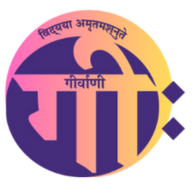Ancient Indian Number System – The Sanskrit Numeral Names Explained
Discover how Sanskrit scholars expressed vast numbers from ekam (1) to parārdham (10¹⁷) — the roots of the modern decimal system.

Shloka on Numbers
एकं दश शतं चैव सहस्रमयुतं तथा।
लक्षं च नियुतं चैव कोटिरर्बुदमेव च॥
वृन्दं खर्वो निखर्वश्च शङ्खः पद्मश्च सागरः।
अन्त्यं मध्यं परार्धं च दशवृद्ध्या यथाक्रमम्॥
Word-by-word Breakdown & Translation
Line 1: एकम् = One (1), दश = Ten (10), शतम् = Hundred (100), सहस्रम् = Thousand (1,000), अयुतम् = Ten Thousand (10,000)
Line 2: लक्षम् = Lakh (1,00,000), नियुतम् = Ten Lakhs (10,00,000), कोटिः = Crore (1,00,00,000), अर्बुदम् = Hundred Million
Line 3: वृन्दम् = One Billion, खर्वः = Ten Billion, निखर्वः = Hundred Billion, शङ्खः = Trillion, पद्मः = Ten Trillion, सागरः = Hundred Trillion
Line 4: अन्त्यम् = Quadrillion, मध्यम् = Ten Quadrillion, परार्धम् = Hundred Quadrillion, दशशब्देन = with 'ten', यथाक्रमम् = sequentially
| Sanskrit | Value | Notes / Translation |
|---|---|---|
| एकम् (ekam) | 1 | One |
| दश (daśa) | 10 | Ten |
| शतम् (śatam) | 100 | Hundred |
| सहस्रम् (sahasram) | 1,000 | Thousand |
| अयुतम् (ayutam) | 10,000 | Ten thousand |
| लक्षम् (lakṣam) | 100,000 | Lakh / one hundred thousand |
| नियुतम् (niyutam) | 1,000,000 | Ten lakhs / one million |
| कोटिः (koṭiḥ) | 10,000,000 | Koti / ten million |
| अर्बुदम् (arbuda) | 100,000,000 | Arbuda (hundred million) |
| वृन्दम् (vṛndam) | 1,000,000,000 | One billion |
| खर्वः (kharvaḥ) | 10,000,000,000 | Ten billion |
| निखर्वः (nikharvaḥ) | 100,000,000,000 | Hundred billion |
| शङ्खः (śaṅkhaḥ) | 1,000,000,000,000 | Trillion |
| पद्मः (padmaḥ) | 10,000,000,000,000 | Ten trillion |
| सागरः (sagaraḥ) | 100,000,000,000,000 | Hundred trillion |
| अन्त्यम् (antyam) | 1 × 10^15 | One quadrillion |
| मध्यम् (madhyam) | 1 × 10^16 | Ten quadrillion |
| परार्धम् (parārdham) | 1 × 10^17 | Hundred quadrillion |
Smooth Translation (One-line)
“One, ten, hundred, thousand and ten thousand; lakh, million, crore and arbuda; vrinda, kharva, nikharva, shankha, padma and sagara; antya, madhyama, and parārdha — each rising by ten in regular sequence.”
🧩 Analysis
1. Origins of Place Value & Decimal System
Ancient Indian scholars pioneered the base-10 (decimal) place value system — the foundation of the modern numeral system. Sanskrit texts mention large numbers up to 10¹⁷ and beyond, showing a deep mathematical understanding.
2. Mathematical Sophistication
Unlike other civilizations, Sanskrit literature includes names for huge values like Ayutam, Koṭi, Padma, and Parārdham. This reflects India's early expertise in large-scale calculations essential in astronomy and cosmology.
3. Cosmic & Philosophical Applications
Numbers like Padma and Parārdha are often used in Puranic cosmology to describe immense timescales — such as the duration of Yugas or the lifespan of the universe itself.
4. Poetic & Mnemonic Utility
Shlokas like this served as mnemonic devices, helping students memorize number names through rhythmic recitation — a hallmark of the oral Sanskrit tradition.
5. Legacy in Modern Math
The Sanskrit number system, along with the invention of zero, influenced global mathematics through transmission to Islamic and later European scholars. Even today, words like Lakh and Crore in Indian English stem from this legacy.
🧠 In Summary
The Sanskrit numeral system beautifully combines mathematical precision with cosmic vision — revealing how ancient India conceived both the infinite and the infinitesimal.
📚 Ready to learn Sanskrit the traditional way?
Join Saṁskṛta Praveśinī Live Explore Saṁskṛta Avagāhinī



